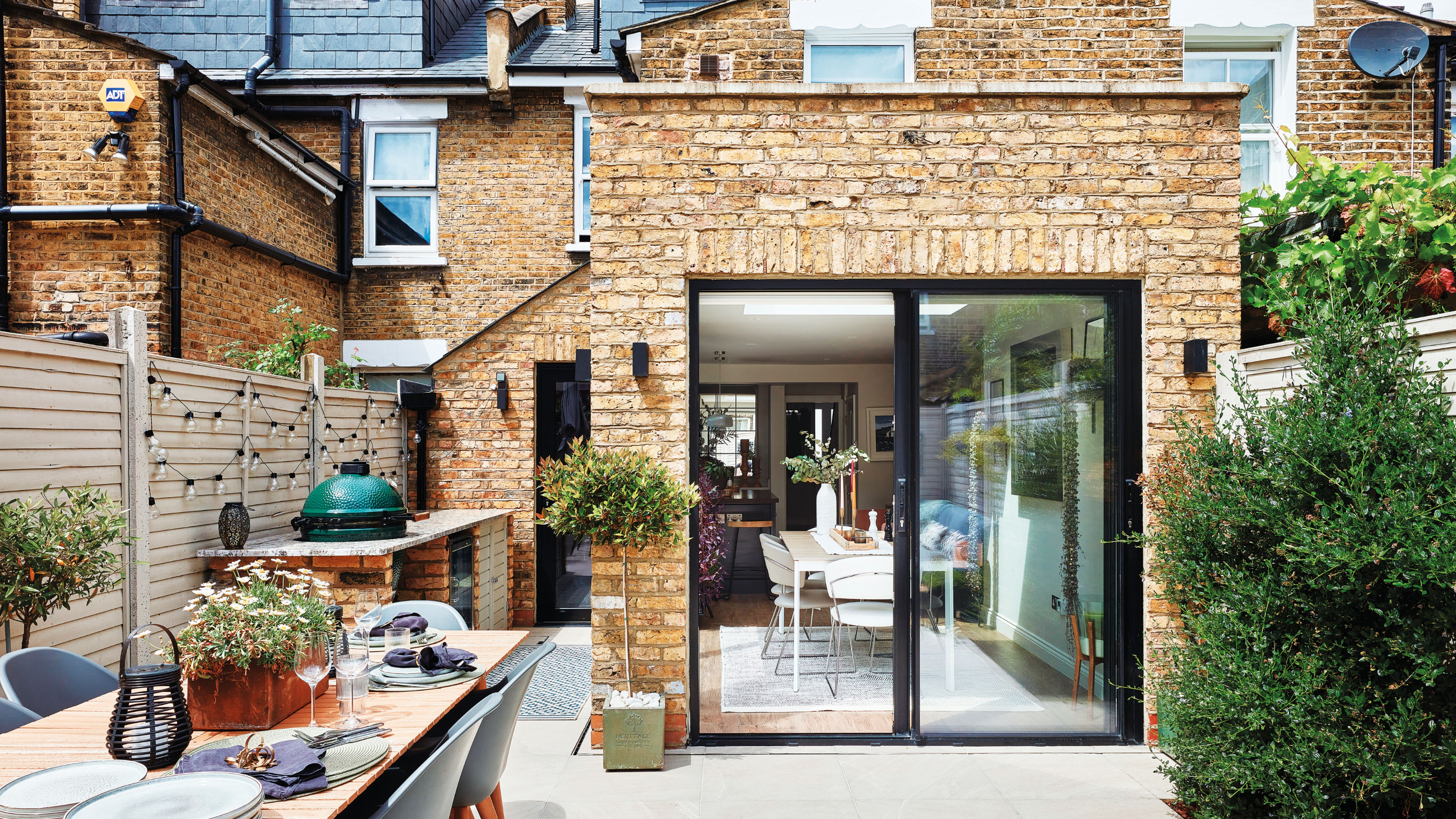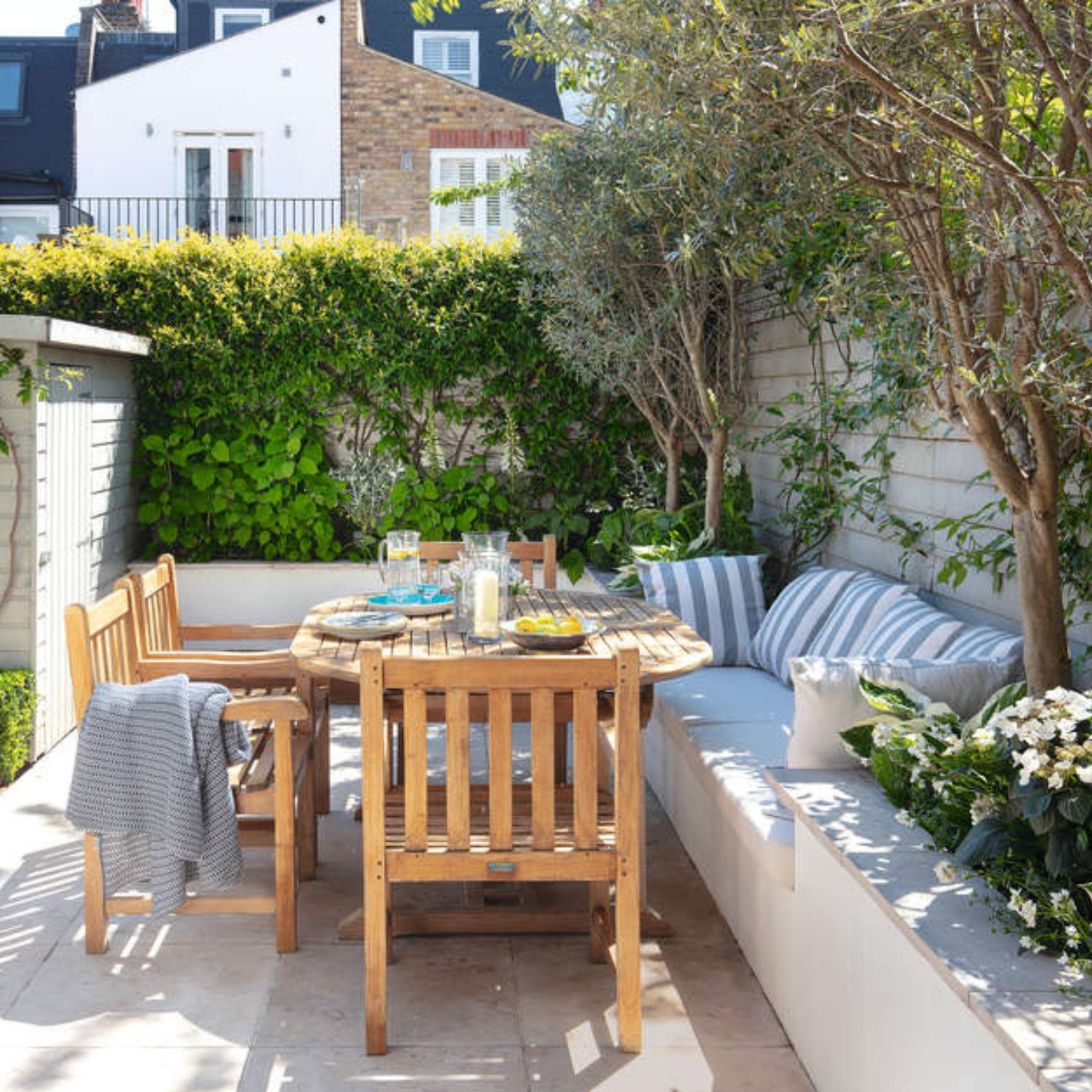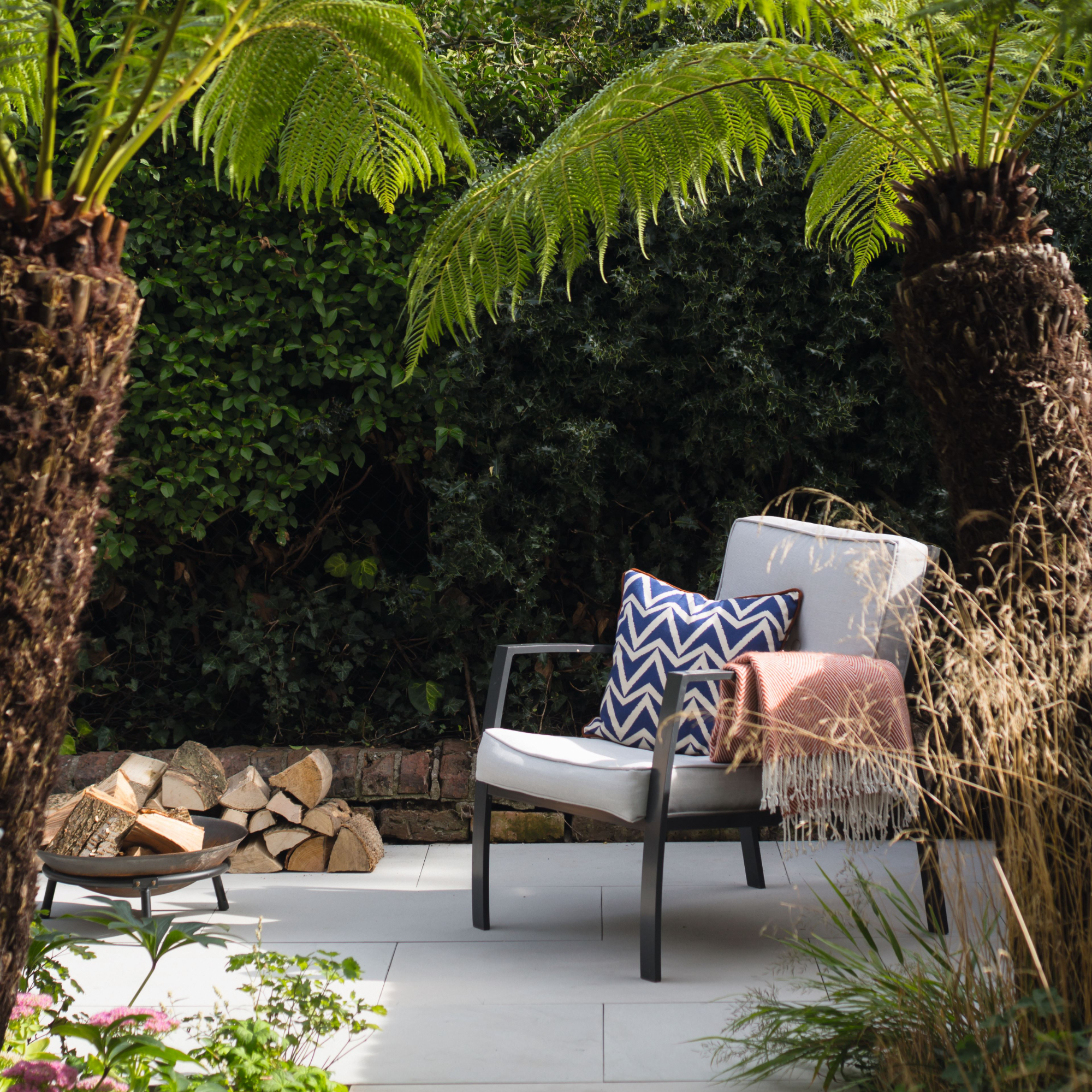Cleaning patio slabs with washing powder - Can you do it and is it safe?
The experts have had their say on this divisive technique


Now that spring is on the horizon, there’s never been a better time to give your patio some TLC. But if you’ve seen patio cleaning hacks all over social media, you might have noticed people cleaning patio slabs with washing powder.
If you’ve put time, effort, and money into bringing your patio ideas to life, you need to know how to look after it. And while the best patio cleaners and the best pressure washers can certainly help you clean a patio, you might be interested to know that they’re not the only options. In fact, another option is currently taking social media by storm - and the cleaning product required is probably sitting under your sink right now.
Yes, while you may use Ariel and Persil to freshen up your clothes, many social media-savvy homeowners have started using this product in their gardens, too. But can you really clean patio slabs with washing powder, and is it safe? Well, we’ve asked the experts.
Can you clean patio slabs with washing powder?
Although washing up liquid and water can help those looking to learn how to clean paving slabs, washing powder can also do the job just as well.
Tom Clifford from Gardenstone explains, ‘Washing powder is an effective yet affordable cleaning detergent for removing stains and cleaning your garden paving. The chemicals in the washing powder are effective in killing moss and algae on the surface of your paving without causing damage.’

In fact, it’s also been noted that washing powder can also help to get rid of weeds on your patio. Not only that, but it’s also extremely affordable and readily available for homeowners who already use this product to wash their clothes.
And while this new option may seem extremely enticing, it’s important to understand the risks when cleaning patio slabs with washing powder. Tom says, ‘It is important to check the material of your paving before using this method as very delicate stones may be more sensitive and damage can occur.’
Sign up to our newsletter for style inspiration, real homes, project and garden advice and shopping know-how
This is echoed by Andy McLaughlin, Paving Specialist at RF Paving, who says, ‘Using the wrong solutions unknowingly could result in the paving being damaged, and in some circumstances, this could be irreversible.’

Is cleaning patio slabs with washing powder safe?
While there are many ways to clean a patio without a pressure washer, it’s important to note that using washing powder isn’t an option for everyone. Ultimately, how safe it is depends on the type of patio you have.
Tom says, ‘You must consider the type of paving slabs in your garden before using washing powder as a cleaning agent. Some natural stones like limestone can be particularly delicate and may react negatively to the chemicals in washing powder.’
That doesn’t mean that you have to live with algae build-up and dark spots on your limestone patio, though. You just need to find an alternative (and gentler) cleaning solution.

‘For limestone slabs, I recommend using an extremely mild solution of washing up liquid and warm water, this method isn't as harsh and will clean your paving effectively while not resulting in corrosion,’ adds Tom.
Of course, it’s also important to consider the surrounding areas when debating cleaning patio slabs with washing powder - especially if you have garden borders surrounding your patio. As the chemicals in washing powder can effectively kill algae, moss, and weeds, you don’t want to get it too close to your plants.
How do you clean patio slabs with washing powder?
If you choose to clean your patio slabs using this method, you’ll be happy to know that it’s very easy. But first, it’s a good idea to prepare the area - unless you’re in the market for some new garden furniture.
Tom explains, ‘Prior to washing your patio, it is important to move all furniture. This will prevent damage and allow a clear space to effectively wash your paving. In addition, I recommend sweeping your patio to remove large pieces of debris and facilitate an easier cleaning process.’
When you’ve done this, you need to create a solution of warm water and washing powder. You shouldn’t need a lot of the washing powder to create an efficient cleaning agent, and Tom suggests sprinkling a small amount into a large bucket of water.

‘Then, start by pouring some of the solution onto your paving. You will want to start with a small section to ensure there is no damage before proceeding with the remainder of your paving,’ he adds.
If you’re confident that the solution won’t damage your slabs, you can then get cracking on the whole patio. Just make sure that you give the washing powder enough time to work its magic.
‘Leave the mixture on your paving for 10 minutes, and then, using a delicate bristle brush, gently scrub the mixture into the paving slab to remove stains, dirt and debris. I recommend starting from the corners and moving inwards,’ says Tom.
‘Depending on the size of your paving, you may have to refill the bucket several times. Once the area is scrubbed, rinse with fresh water. When rinsing, try to direct the water towards the nearest drainage point to ensure the washing powder is discarded appropriately and not left to sit in your garden.’
Of course, you may need to repeat this process a few times if you have a particularly dirty or stained patio.
FAQs
Does washing powder remove black spots on patio?
Yes! In addition to giving your patio a deep clean, a mixture of washing powder and warm water can also remove the black spots on it.
You just need to make sure that you give the solution enough time to work its magic and brush with a soft-bristled brush to really agitate and remove the dirt. Then, rinse it clean and watch as the black marks disappear.
What is the best solution for cleaning patio slabs?
There are various different solutions that you can use to clean patio slabs, from dedicated patio cleaners to homemade cleaning solutions. What you choose to use is ultimately your choice, but it’s always a good idea to double-check the solution is safe to use on your specific patio before getting started.
However, most experts suggest using either a mixture of vinegar and water or water and washing-up liquid to clean patio slabs. This will remove grime, dirt, and algae build-up without stripping the stone back too much or damaging it in the process.
You need to make sure you keep on top of this cleaning process, though. Molly Woodward-Moor, creative director at Stone Superstore explains, ‘To keep your patio looking its best, it’s a good idea to give your tiles a thorough clean at least once or twice a year.’
‘Most people tend to choose either side of winter as the best time of year to clean their patios - once just after autumn to clear the majority of fallen leaves and debris, and once just as spring is approaching after the cold, wet winter that can lead to unwanted organic growth and a build-up of dirt.’
Of course, you could also use washing powder, too!
So, cleaning patio slabs with washing powder is definitely an option, but it’s not always the right option.

Lauren Bradbury has been the Content Editor for the House Manual section since January 2025 but worked with the team as a freelancer for a year and a half before that. She graduated with a Bachelor’s degree in English and Creative Writing from the University of Chichester in 2016. Then, she dipped her toe into the world of content writing, primarily focusing on home content. After years of agency work, she decided to take the plunge and become a full-time freelancer for online publications, including Real Homes and Ideal Home, before taking on this permanent role. Now, she spends her days searching for the best decluttering and cleaning hacks and creating handy how-to guides for homeowners and renters alike, as well as testing vacuums as part of her role as the Ideal Home Certified Expert in Training on Vacuums, having spent over 110 hours testing different vacuum models to date!